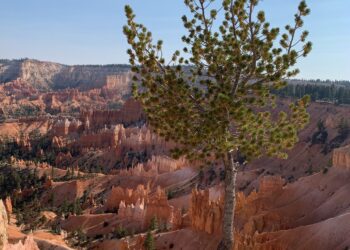America’s national bird suffers from a seasonal threat of lead exposure
By Benjamin Alva Polley EBS COLUMNIST

Imagine a hunter in western Montana late in the fall comes across America’s national bird grounded and unable to fly. The majestic raptor looks drunk and hungover—it can hardly stand, its head droops, its talons are clenched, and the wings fall away from the body. The bird can’t take flight. It seems to have lost control of bodily functions, generally taken for granted. The mighty bird is lethargic and quiet. Its eyes have become more almond-shaped and have dulled in the sense of reactions to stimuli. Lead bullets used by some hunters have inadvertently poisoned the scavenger. This bird may die.
A recent scientific article co-authored by MPG Ranch researcher and big game hunter Michael McTee and others was just published by Science of the Total Environment about how raptor biologists teamed up with raptor rehabilitators to paint a comprehensive picture of seasonal lead concentrations in bald eagles from western Montana. The statewide study had two parts: they looked at free-flying bald eagles in the winter right after Montana’s big game hunting season. During this time, bald eagles fly around eating fish, waterfowl, foraging, and scavenging gut piles left over from hunting season and road-killed animals. Biologists from Raptor View Research Institute used traps to capture the birds on or near carcasses to look at blood-lead concentrations, and roughly 90 % of the eagles had blood-lead concentrations above baseline. Then the researchers looked at free-flying data from four rehabilitation centers throughout western Montana, showing a clear seasonal link with very high lead concentrations in bald eagles following hunting season.
“You probably won’t catch many researchers saying this about their study, but this study is not incredibly novel,” McTee said. “It shows this seasonal trend where bald eagles have lead concentrations that climb during and after hunting season and subside into the spring. It adds another data point to a scatterplot full of these studies.”
This study is regionally focused on Montana, where the dataset looked at over 200 bald eagles in western Montana. The data spans roughly a decade from four rehabilitation centers, including Wild Skies Raptor Center in Potomac, Montana Wild Wings Recovery Center in Kalispell, Montana WILD in Helena, and Montana Raptor Conservation Center in Bozeman.
A little bit of lead in the body directly affects the mighty bird to not be at its top performance, affecting maneuverability. Eagles hit by automobiles are often slow to take off from the roadway, and that split-second slower because their wings aren’t working correctly can mean life or death for that eagle.
“Lead affects everything in their body,” said Brooke Tanner, one of the study’s co-authors and a Wild Skies Raptor Center wildlife veterinarian. “It’s just not neurological. It affects appetite, G.I. issues, and breathing and dehydrates them by starving them of electrolytes. Eating a tiny piece of lead, a BB size, is all it takes to kill an eagle.”
Once wildlife rehabilitators receive sick birds, they hydrate them with water and electrolytes. Wildlife veterinarians and rehabilitators treat raptors that test positive at a clinical level for the lead with chelation therapy, which consists of calcium disodium ethylenediamine tetraacetate (CaEDTA) injections; this “chelator” binds to the lead to take it out of the bird’s bloodstream—essentially “scrubbing” the blood clean. The therapy helps most birds unless the blood lead concentration is too severe and the birds are too far gone beyond the point of recovery.
A recent yet different study came out last year where researchers used an X-ray looking at ballistic tests to decipher how many fragments came off lead bullets in gel and found thousands upon thousands of shards.
“I’ve done quite a bit of ballistic testing with lead and copper bullets,” McTee said. “When I shoot a lead bullet and watch it fragment, I’m still stunned by how many particles will shed from a bullet. And those end up in gut piles and carcasses that bald eagles and other scavengers eat.”
These fragments end up on the landscape, inside scavengers, or in the meat at your dinner table. Lead is highly toxic and has been eliminated from paint, gasoline, plumbing, and household products. In animals (humans), lead is unhealthy at any level. Many Montana birds scavenge, including barred owls, crows, great horned owls, golden eagles, gray jays, northern goshawks, magpies, ravens, red-tailed hawks, and Stellar jays. Many mammals scavenge, including but not limited to black and grizzly bears, coyotes, foxes, mice, pine martens, lesser weasels, wolves, and wolverines. Lead is also found in fishing tackle, affecting freshwater species, and can linger in waterways on the bottom of marshes, lakes, rivers, and streams. Many people use lead shot to kill ground squirrels and prairie dogs. Raptor rehabilitators like Tanner use rehab birds for education purposes to increase awareness surrounding lead poisoning by visiting school groups. McTee teaches for the Montana Master Hunter Program three times each spring and discusses the benefits of using lead-free bullets. “Copper bullets perform really well.”
California and Denmark have banned lead bullets for hunting. A new bill in Colorado proposes a nontoxic bullet replacement program. The U.S. Fish and Wildlife Service banned lead shot for waterfowl hunting in 1991, hence saving an estimated 1.4 million ducks in 1997. No, hunting is not being outlawed. Science is just questioning the ingredients used in ammunition. If you live in the states of Alaska, Montana, New York, or Wyoming, conservation programs are offering a $20 voucher for non-lead bullets and ammo.
Lead is prevalent in the landscape but doesn’t have to be. After learning about the inherent dangers, many anglers and hunters voluntarily switch to lead-free ammunition and tackle. Hunters are some of the most prominent conservationists, and once they become aware of the risks, they vote with their wallets and make the needed changes. Call your local raptor rehabilitation center if you encounter a grounded raptor that can’t fly.
“It’s tough to see these animals that are supposed to be up in the sky, stuck on the ground,” Tanner said. “It can be a slow horrible death.”
Benjamin Alva Polley is a place-based storyteller with stories published in Outside, Adventure Journal, Popular Science, Field & Stream, Esquire, Sierra, Audubon, Earth Island Journal, Modern Huntsman, and other publications at his website www.benjaminpolley.com/stories. He holds a master’s in Environmental Science and Natural Resource Journalism from the University of Montana.















